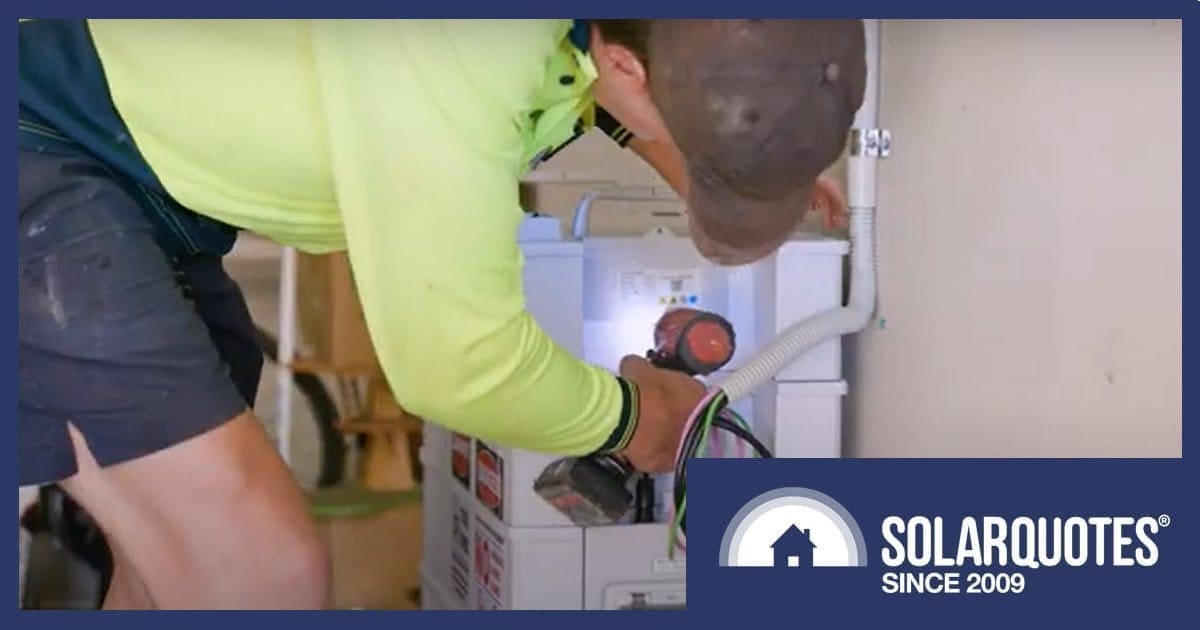
With the official launch of the Australian government’s home battery subsidy, installers are now really under the pump. But there are hard limits on how many installations they can perform in a day set by the powers that be — and with good reason.
Both the Cheaper Home Batteries program and national solar panel rebate are part of Australia’s Small-scale Renewable Energy Scheme (SRES). With so much work around now, some companies could be tempted to cut corners to maximise installations, which is never a good thing.
But there are a bunch of rules installers must follow to stay sweet with the authority overseeing the SRES, the Clean Energy Regulator (CER), and also Solar Accreditation Australia (SAA), which accredits designers and installers. Among those rules are how many systems can be installed in a day.
Installers need to comply with daily installation limits set by SAA to claim Small-scale Technology Certificates (STCs), which are the virtual bits of paper on which the rebates are based1.
Up until June 30th 2025, an accredited person installing or supervising solar system installations only could not sign off on more than two installations per day. And from July 1, 2025 until August 1, 2025, the daily limits are either:
- 2 solar battery systems,
- 2 solar power systems,
- 1 solar power system and 1 battery system,
- 1 solar system plus two additional ‘ready to commission’ batteries,
- 1 battery system, plus two ‘ready to commission’ batteries, or
- Up to 4 ‘ready to commission’ battery installations.
Prior to officially launching on July 1, a bunch of energy storage systems were installed that will be eligible for the rebate assuming the installations weren’t finalised (fully commissioned) before that date. A ‘ready to commission’ battery is considered one only needing final testing and commissioning, i.e. the two earlier stages of work (job setup and mid-installation) were completed previously.
Then from 2 August 2025, the daily installation limits are:
- Two solar systems,
- Two battery systems, or
- One solar system and one battery system.
There are some exemptions — more on the limits and other SAA requirements can be found here.
How Are Installation Dates Verified?
So, what’s stopping installers from installing (for example) two solar power systems and a battery on a single day and then simply fudging the paperwork?
“Selfies” play an important role.
It’s been the case for some years that solar installers are required to take time-stamped photos at each phase of a solar installation and a final ‘completion’ photo matching the test date on the electrical certificate of compliance (or equivalent). More recently, this has extended to battery systems.
To verify installations, the photo’s metadata is examined. This is hidden information embedded within a digital image file that provides details about the photo, such as date, time and location data.
Battery Inspections Start Soon
The Clean Energy Regulator says it will commence conducting inspections on solar battery installations installed under the Cheaper Home Batteries program soon to ensure they meet installation and safety requirements.
“We’ll publish inspection data on our website and share results, including insights on key learnings and risks, with state and territory regulators and authorities responsible for electrical safety and fair trading.”
And the Regulator has a message for both solar retailers and their customers — be patient:
“Consumers can expect that there may be longer than usual wait times for both ordering a new solar battery, or having a new solar battery installed. Solar battery retailers and registered agents can expect delays in processing STCs while we establish our systems.”
While rules around solar and battery installations are strict, it doesn’t mean some don’t have a red-hot go at breaking them. Just recently, a New South Wales man was convicted of multiple offences relating to fraudulent claims under the SRES after a CER investigation. The installer, who didn’t have accreditation, sourced other accredited installers and his employees to sign off on and claim STCs for solar installations he himself completed.
A criminal conviction was recorded for each offence and he copped a $5,500 fine along with a 200-hour Community Corrections order. What was surprising is that this wasn’t his first rodeo. Back in 2019, he was convicted of providing false information concerning eight solar installations, and he was still on a good behaviour bond at the time of his most recent offences.
Footnotes
- Both the solar and battery rebate are offered as an up-front discount to the customer, with the installer/retailer claiming the STCs after installation ↩
